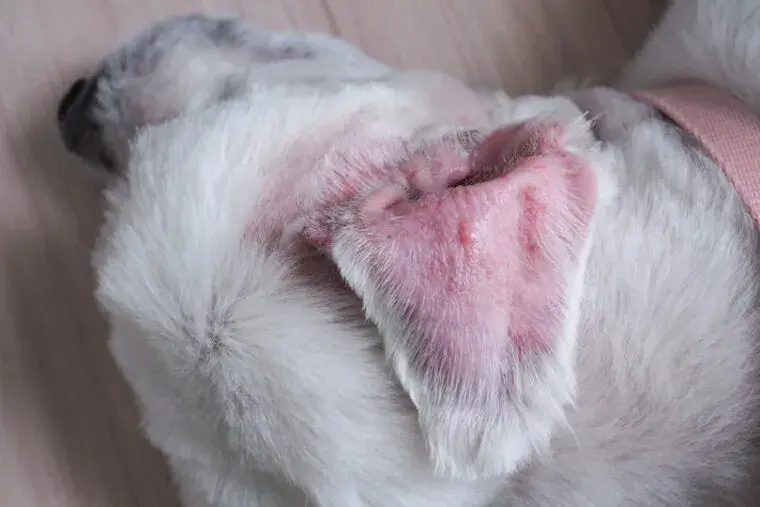Understanding and Managing Dog Ear Infections: A Comprehensive Guide
- Kristy Zan
- Sep 21, 2023
- 3 min read
When it comes to our furry companions, their well-being is of utmost importance. One common health issue that can affect dogs is ear infections. These infections can cause discomfort and pain to your beloved pet, but with proper knowledge and care, you can help them recover swiftly. In this article, we will explore the reasons behind dog ear infections, what they are, and provide a comprehensive guide on how to manage them at home.
Understanding Dog Ear Infections
What is a Dog Ear Infection?

A dog ear infection, also known as otitis externa, is the inflammation of the external ear canal. It can be caused by various factors, including bacteria, yeast, or allergies. Ear infections are prevalent in dogs of all breeds and ages, but certain breeds with floppy ears, like Cocker Spaniels and Basset Hounds, may be more susceptible due to limited air circulation in their ear canals.
Common Causes of Dog Ear Infections
Infections: Bacteria like Staphylococcus and Pseudomonas can thrive in the warm and moist environment of a dog's ear canal.
Yeast Infections: Yeast, particularly Malassezia, can multiply rapidly, leading to an infection, especially in dogs with allergies or those that love water.
Allergies: Food allergies, environmental allergies, or contact allergies can trigger inflammation in the ear canal, making it more susceptible to infection.
Ear Anatomy: Dogs with long, floppy ears or hairy ear canals are more prone to ear infections as their ear structure can trap moisture and debris.
Foreign Objects: Occasionally, foreign objects like grass seeds or dirt can get lodged in the ear, causing irritation and infection.
Recognizing the Symptoms
It's crucial to identify the signs of a dog ear infection early to ensure prompt treatment. Common symptoms include:

Ear Scratching: Your dog may scratch their ear more than usual or rub it against furniture or the floor.
Head Tilting: A tilted head can be a sign of ear discomfort.
Ear Odor: A foul odor emanating from the ear is often indicative of an infection.
Ear Discharge: You may notice yellow, brown, or bloody discharge from the ear.
Redness and Swelling: The ear canal may appear red and swollen.
Pain and Discomfort: Your dog may yelp or shy away when you touch their ear.
Managing Dog Ear Infections at Home
1. Consult Your Veterinarian
Before attempting any home remedies, it's essential to consult your veterinarian. They can properly diagnose the infection and recommend the most suitable treatment plan. In some cases, prescription medications may be necessary.
2. Cleaning the Ear
Cleaning your dog's infected ear is a critical step in managing the infection. Your vet can recommend an appropriate ear cleaner or provide one. Here's a step-by-step guide:
Gather the necessary supplies: ear cleaner, cotton balls or gauze pads, and treats for positive reinforcement.
Gently lift your dog's ear and fill the ear canal with the cleaner as directed by your vet.
Gently massage the base of the ear for about 20-30 seconds to help distribute the cleaner.
Allow your dog to shake their head to remove excess cleaner.
Carefully wipe away any loosened debris or discharge from the ear using cotton balls or gauze pads.
Reward your dog with treats and praise for their cooperation.
3. Medication Administration

If your vet prescribes medication, follow their instructions carefully. Common treatments may include antibiotic or antifungal ear drops. Ensure you complete the full course of treatment, even if symptoms improve before it's finished.
4. Keep the Ear Dry
Moisture can exacerbate ear infections. Prevent water from getting into your dog's ears during baths or swimming by using ear covers or cotton balls.
5. Dietary Management
If allergies are a contributing factor, your vet may recommend a hypoallergenic diet or specific dietary changes. Follow their advice regarding your dog's nutrition.
6. Regular Ear Checks
After your dog's infection has cleared, make it a habit to check their ears regularly for signs of trouble. Early detection can help prevent future infections.
Conclusion
Dog ear infections can be uncomfortable and painful for your pet, but with prompt attention and proper care, they can be managed effectively at home. Remember to consult your veterinarian for an accurate diagnosis and treatment plan tailored to your dog's specific needs. By following the steps outlined in this guide, you can help your furry friend recover and prevent future ear infections, ensuring their health and happiness.





Comments